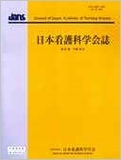Japanese
English
- 販売していません
- Abstract 文献概要
- 参考文献 Reference
要旨
目的:更年期女性へのヨーガ介入研究をナラティブレビューし,その実践内容と効果との検討からプログラムの構成要素を見出すことである.
方法:PRISMA声明の原則手順に準拠し,医学データベース(Ovid MEDLINE, CINAHL plus, PubMed)を用い,[女性]および[更年期][ヨーガ介入]に関する用語を検索用語とし,1997年〜2016年3月の英語論文16件を分析対象とした.
結果:ヨーガプログラムは11種類であり,介入期間は8〜24週,各クラス1回の所要時間は45〜90分,開催頻度は週1〜5回,展開方法は集団実践のみと集団実践と併せて自宅実践の両者であった.介入内容には,座法,調気法,瞑想の3要素が取り入れられ,更年期症状の緩和に有効であった.
結論:更年期女性におけるヨーガプログラムの構成要素は,座法,調気法,瞑想を基本とし,集団実践には訓練されたインストラクターとピアサポートの存在,自分のための時間確保と利便性の考慮が必要であることが見出された.
Purpose: The purpose of this review is to explore effective yoga intervention programs for menopausal women and identify the design and construction of the programs.
Method: Based on the principle procedure of the PRISMA statement, the medical databases (Ovid MEDLINE, CINAHL plus, PubMed) from 1997 to March 2016 were searched. Search terms included: “women”, related to “menopause”, and “yoga”. A total of 16 published articles were analyzed.
Results: There were 11 kinds of yoga programs. The intervention period was 8 to 24 weeks, the duration of classes ranged from 45 to 90 minutes, and the session frequency 1 to 5 times per week. Programs were conducted in two ways: group practice only and a combination of group practice and home practice. The programs comprised three elements: postures, controlled breathing, and meditation. They were found to be effective in mitigating menopause symptoms.
Conclusion: Effective yoga programs for menopausal women were created based on postures, controlled breathing, and meditation. This study revealed that trained instructors, peer supporters, the allocation of time to practice, and easy access to yoga practice, are important considerations.
Copyright © 2017, Japan Academy of Nursing Science. All rights reserved.


